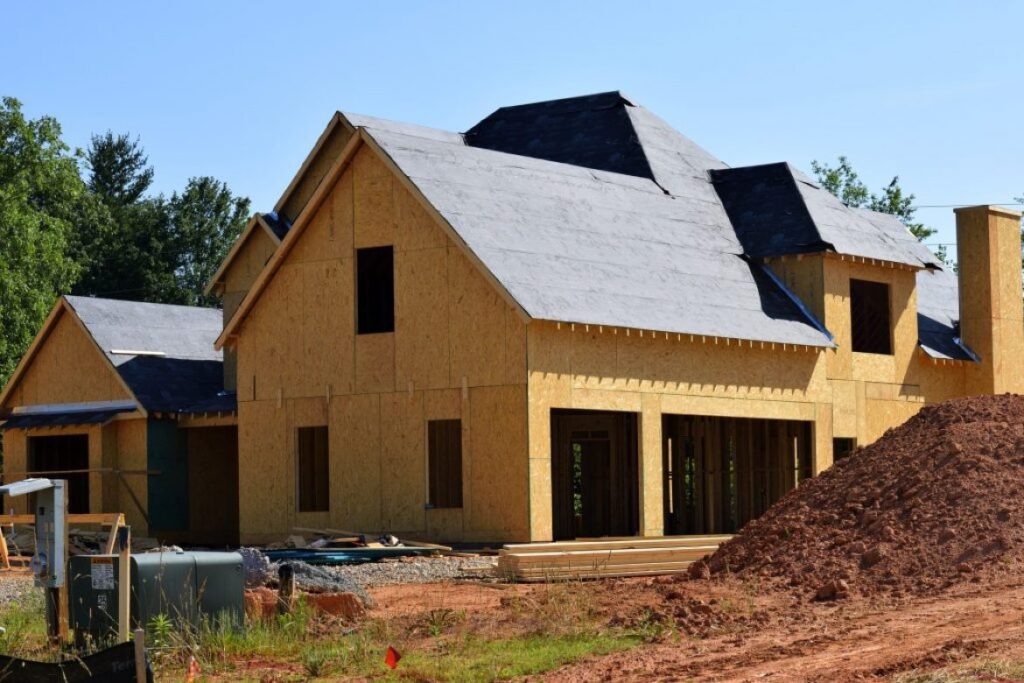Buying a home is an exciting, yet overwhelming experience if you are not entirely sure on the type of property you prefer. Let’s compare the pros and cons of new construction and existing homes:
Buying a New Construction Home – The Pros
The majority of new homes are built in subdivisions with a unified style and restrictions in place to maintain the property values. Developers factor in amenities that most people want and home features that are desirable to their targeted market. There other advantages to opting for a new home:
Customization. During construction, you can add the extras you have always dreamed of having in your home. For instance, a garden tub is an expensive modification in existing homes; not possible in some older homes.
Usable Space. New homes feature the latest styles like an open floor plan and large family rooms for entertaining guests.
Low Maintenance. Most new homes have low-maintenance exteriors such as vinyl-wrapped windows, trim, and railings. That means less time spent on routine maintenance. You are free to spend your off-hours golfing, traveling, or just enjoying your home with a backyard cookout.
Efficiency. Engineers develop construction materials for optimal energy efficiency. Highly efficient HVAC systems, windows, and Energy Star appliances equate to lower utility bills.
Warranty. New homes come with a warranty; some builders include warranties for up to 10 years.
Buying a New Construction Home – The Cons
While allowing the builder to streamline the process is convenient, new constructions come with some drawbacks:
Price. There is very little room for negotiation. Builders may work with you on some upgrades, but most stay firm on price. Also, additional costs like landscaping, driveways, window coverings and upgrades can add up quickly.
Resale Value. Some homebuyers in large multi-phase developments, who have attempted to sell their home after a few years, sometimes find themselves competing against the builder for potential buyers. They also may end up selling for less than they originally paid for their home.
Small Bare Yards. New construction often lacks mature landscaping and may have smaller lots than existing homes. The developer generally maximizes available land. The result is limited outdoor space and extremely close neighbors.
Building Noise & Debris. It could take many months or years for the development to build-out and new construction to cease. That means heavy equipment stirring up dust, mounds of debris or large bins, and the noise of saws and nail guns year-round.
Restrictions. You may be limited on modifications to the exterior of your home and what you can have in your yard by tight subdivision restrictions.
Time. Not only can it take as long as a year for your house to be completed, but there is also a lot of time involved in picking out each detail.
Buy an Existing Home – The Pros
According to the National Association of Home Builders, the median price of a new home in the United States was $301,400 in February of 2016, while the median price of an existing home was $212,300. The value of a spacious yard and mature landscaping for pets and children to play in is difficult to quantify. There are no rigid homeowners associations or dues in older subdivisions. Some other advantages:
Variety. You have more styles to choose from. In your price range and selected area, you will find brick homes, single-story homes, and many different floor plans.
Negotiable Price. Individual sellers are often more negotiable on price. They may be motivated by other life factors to sell fast.
Established Neighborhoods. The final determining factor for many homebuyers is which place feels most like home. There is a sense of community in older neighborhoods that is missing in some new developments.
Character. Existing homes may have details and woodwork you won’t find offered in new homes.
Buy an Older Home – The Cons
If you are not particularly handy at home improvement projects or knowledgeable about the cost of home repairs, older homes can become large money pits although most issues should be reported in sellers disclosures to protect you. There are other cons to owning an older home that you should keep in mind:
Not Energy Efficient. Typically much less energy-efficient than new homes. If they do have things like thermal windows, they are less efficient than modern windows. Retrofitting new windows to older homes can be a challenge.
Undesirable Floorplans. May have small rooms that you are stuck with. Load-bearing walls will prevent you from making significant changes to the existing floor plan. Some mirrors and bright colors may make the rooms look bigger, but they will always be the same size.
Maintenance Needs. Generally, require ongoing maintenance that will quickly turn into costly repairs if not done. Additionally, older homes have less useful life remaining for things like the furnace, roof, and appliances.
At Berkshire Hathaway HomeServices in Sumter, South Carolina, “we know great homes.” Visit our site to see both home sales and rental listings! For more information, please contact one of our real estate agents at the John M. Brabham Real Estate office by calling (803) 775-1201.




